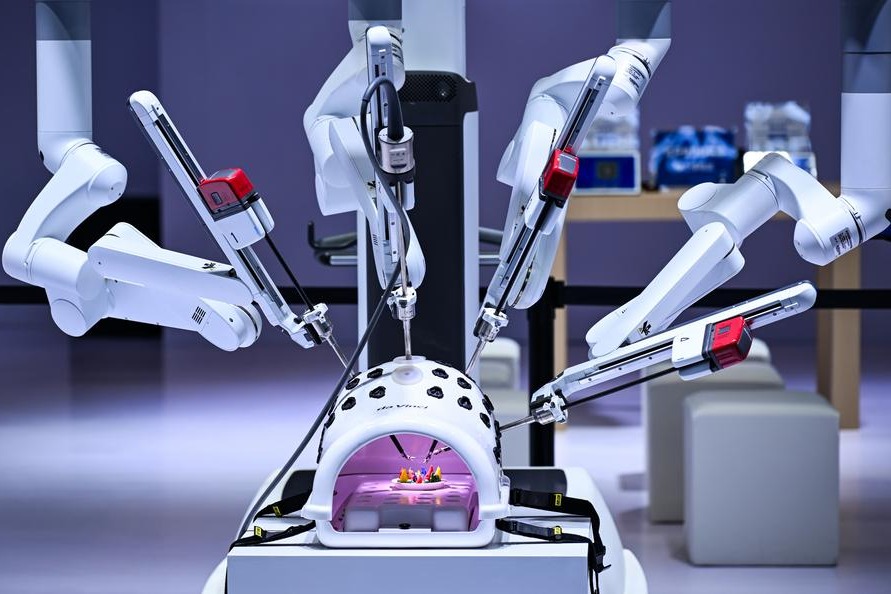Mars could be getting closer and closer, if this science isn’t magic

A secret space race is out of the bag.
It revolves around the so-called EmDrive propulsion system, which seems to cherry pick the laws of physics and science fiction, using some and defying others, to produce an engine capable of getting humans to the moon in 10 days, Mars in 10 weeks, without any fuel.
A leaked paper from the National Aeronautics and Space Administration (NASA) was posted on line last month suggests that not only have researchers at Johnson Space Center in Houston been tinkering around with the idea, which a lot of people knew — but they have one that actually works.
And now China has announced that it, too, has created a working prototype. It's one of the previously closely guarded experiments being conducted on the Tiangong-2 space Lab recently put in orbit.
At a press conference in Beijing on Tuesday, researchers with the China Academy of Space Technology (CAST) said the government has been funding the research for six years and all that the NASA results do is confirm what they have already achieved.
CAST also plans to put their "impossible" reactionless engines to work powering satellites as soon as possible.
The EmDrive engine defies Newton's Third Law of Motion — for every action there is an equal and opposite reaction. Jet engines burn fuel to power turbines to suck in air and blast it out backward to produce forward thrust.
The EmDrive ejects no opposite-directed mass or particles to produce forward thrust. Instead, it bounces microwaves around inside a cone-shaped metal chamber, which, because of the shape, produces thrust at the wider end.
The concept is for the unit to convert sunlight in space into the needed microwaves, making a self-sustaining power plant that never needs a refill.
But it is the very defiance of Newton's law that has many skeptics dismissing the whole concept, saying there are probably other explanations for their experimental results — expansion from heating, for instance.
"If the results are valid, it definitely points to a new physics," said Brice Cassenti, professor of engineering and an advanced propulsions systems expert at the University of Connecticut.
But he added, "Newton's laws have already been shown not to apply" under certain conditions — high relative speeds, large gravitational fields, very small scale molecules.
"There are certainly many aspects of physics that we do not understand," he told a college publication. "Some aspects are so mysterious that we don't even know where to begin."
The NASA tested device was a closed copper cone whose interior was bombarded with controlled bursts of microwaves at 40, 60 and 80 watts, generating about 1.2 millinewtons of thrust per kilowatt (by contrast, the current state-of-the-art Hall thruster, which uses electricity to ionize propellants like xenon and krypton, produces 60 millinewtons per kilowatt, so the EmDrive's got some catching up to do).
Still, EmDrive proponents remind us that they don't need any propellants and that alone, in a tortoise-and-hare kind of way, more than makes up for the difference.
Jim Woodward, a physicist at California State-Fullerton, told Motherboard: "The issue involved here is whether the experiment is seeing something real or not." Violating the laws of physics is not something any scientist takes lightly.
EmDrive's inventor, British scientist Roger Shawyer, argues that it has been known and acknowledged since the 1950s that radiation exerts pressure and does so when it enters the irregularly shaped chamber, basically pushing more on one end than on the other.
In an elegant 15-minute slide presentation available on the internet, he lays out the science "to separate EmDrive operation from magic," as he puts it, actually using another of Newton's Laws (force equals mass times acceleration) to prove it.
"EmDrive is based on standard physics and has been proved by experiment," he says, mapping out seven separate trials runs at five centers, including one in China.
"It is now up to the space and defense world to demonstrate the many EmDrive applications and for commercial industry to capitalize on this technology," he concludes.
Li Feng, chief designer at the China Academy of Space Technology's communication satellite division, said the technology being tested in orbit right now is "in the latter stages of the proof-of-principle phase" with the goal of making it available in satellites "as quickly as possible."
"Although it is difficult to do this, we have the confidence that we will succeed," he said.
The race is on.
Contact the writer at chrisdavis@chinadailyusa.com.


































